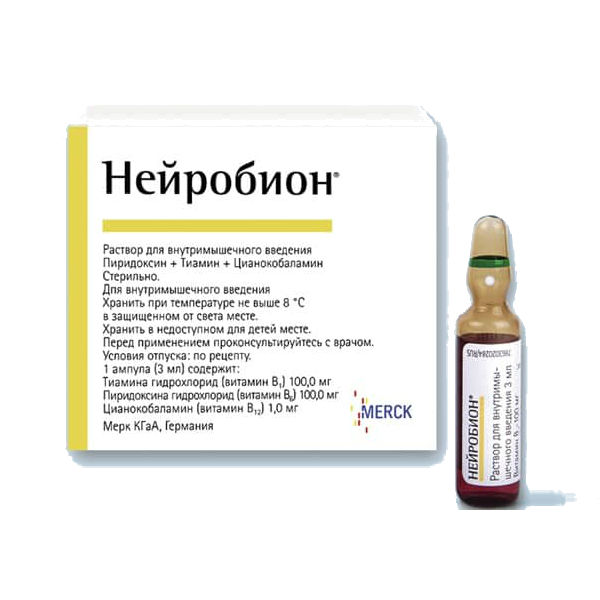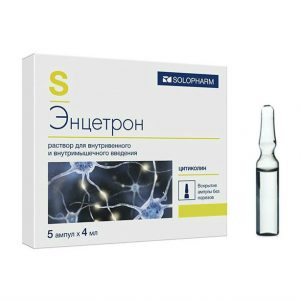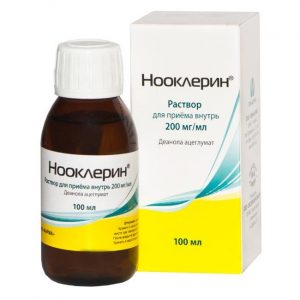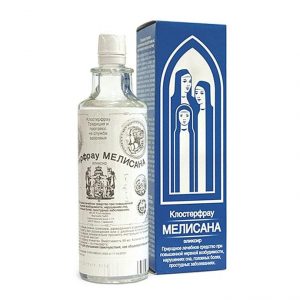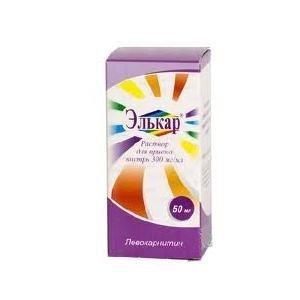Description
Latin name
NEUROBION
Packing
3 ampoules of 3 ml.
Pharmacological action
Pharmacodynamics
The drug contains a combination of neurotropic vitamins of group B.
Contained vitamins: thiamine (B1), pyridoxine (B6) and cyanocobalamin (B12) play a special role as coenzymes in the intermediate metabolism that occurs in the central and peripheral nervous system.
A special role in the metabolic processes of the nervous system is played by the combined action of vitamins B1, B6 and B12, which justifies their combined use. The combined use of B vitamins accelerates the regeneration of damaged nerve fibers. It has been proven that the effectiveness of the combination is superior to that of the individual component.
Like other vitamins, they are essential nutrients that the body cannot synthesize on its own.
The therapeutic administration of vitamins B1, B6 and B12 to the body makes up for the often inadequate intake of vitamins from food, which ensures the presence in the body of the necessary amounts of coenzymes.
The therapeutic use of these vitamins for various diseases of the nervous system is aimed at, on the one hand, to compensate for the existing deficiency (possibly due to the increased need of the body, due directly to the disease) and, on the other hand, to stimulate natural mechanisms aimed at restoring function of nerve tissue.
However, the indirect analgesic effect of the complex of B vitamins has a beneficial effect on the therapeutic result.
Pharmacokinetics
Thiamine
The elimination half-life is about 4 hours.
The human body contains about 30 mg of thiamine. Given the rapid metabolism, it is excreted after 4-10 days.
Pyridoxine
The human body contains about 40-150 mg of pyridoxine. 1.7-3.6 mg is excreted per day by the kidneys.
Cyanocobalamin
Excess cyanocobalamin is mainly accumulated in the liver. The daily need for vitamin is 1 mcg.
The metabolic rate of cyanocobalamin per day is 2.5 mcg, or 0.05% of the amount in the liver.
From the liver, it is excreted with bile into the intestine and is largely reabsorbed during intestinal-hepatic circulation.
Indications
In the complex treatment of the following neurological diseases:
Neuropathic pain caused by polyneuropathy (including diabetic and alcoholic)
Neuritis and neuralgia: trigeminal neuralgia,
neuritis of the facial nerve syndrome, srdlrd, srd spinal diseases (lumbar ischialgia, plexopathy, radicular syndrome caused by degenerative changes in the spine),
herpes zoster.
Contraindications
Hypersensitivity to any component of the drug.
Children’s age.
Use during pregnancy and lactation
To date, there are no data on undesirable effects during pregnancy after the introduction of vitamins B1, B6 and B12 in recommended doses.
Composition
3 ml solution for intramuscular injection contain:
Active ingredients: Thiamine hydrochloride (vitamin B1) 100.0 mg, Pyridoxine hydrochloride (vitamin B6) 100.0 mg, Cyanocobalamin (Vitamin B12) 1.0 mg
Excipients: potassium cyanide 0 1 mg, sodium hydroxide solution 1 M 73.0 mg, water for injection up to 3 ml.
Dosage and administration of
The drug is administered intramuscularly (deep injection into the gluteus muscle).
Treatment is recommended to be started with intramuscular injection of 1 ampoule (3 ml) per day until acute symptoms are relieved.
After improvement of symptoms or in cases of moderate severity of the disease: one ampoule 1-3 times a week for 2-3 weeks.
For maintenance therapy, for the prevention of relapse, or to continue the course of treatment, it is recommended that the drug Neurobion ® in another dosage form (coated tablets).
Duration of treatment is determined by the physician.
Side effects
The frequency of side effects of the drug is estimated as follows: Very frequent: 1/10
Frequent: 1/100, <1/10 Not frequent: 1/1000, <1/100 Rare: 1/10 000, <1/1000 Very rare: <1/10 000, including individual messages Frequency not set: cannot be estimated with available data. Disorders of the nervous system: Frequency not established: prolonged use (> 6-12 months) of vitamin B6 in a daily dose of> 50 mg can cause peripheral sensory neuropathy.
Disorders of the gastrointestinal tract: Frequency not found: nausea, vomiting, diarrhea, abdominal pain.
Immune system disorders: Very rare: hypersensitivity reactions such as sweating, tachycardia, skin reactions (itching, urticaria), anaphylactic shock.
General disorders and disorders at the injection site: Frequency not found: reactions at the injection site.
Drug Interaction
When used with levodopa, vitamin B6 can reduce the anti-parkinsonian effect of levodopa.
An increase in the need for vitamin B6 may occur with the simultaneous administration of D-penicillamine and cycloserine.
It is not recommended to mix the drug with other drugs in one syringe.
Vitamin B1 is destroyed by interaction with solutions containing sulfites.
Overdose
Vitamins B1, B6 and B12 have a wide therapeutic range. Symptoms of overdose are not observed when using the drug at the recommended doses and regimen.
Intravenous administration of high doses of vitamins for a long time (more than 2 months) may result in intoxication symptoms.
Vitamin B1: The following symptoms are reported after a dose greater than 100 times the recommended dose: headache, muscle spasm, muscle weakness, paralysis, arrhythmia, allergic reactions.
Vitamin B6: neuropathies with ataxia, sensitivity disorders, epileptiform seizures with changes in EEG. After administration of more than 2 g per day, cases of hypochromic anemia and seborrheic dermatitis were described.
Vitamin B12: Allergic reactions, eczematous skin disorders and benign acne have been observed after high-dose parenteral administration.
In the event of symptoms of overdose, treatment with the drug should be discontinued. If necessary, symptomatic therapy, including desensitizing, is prescribed.
Storage conditions
At a temperature not exceeding 8 ° C in a dark place.
Keep out of the reach of children.
Expiration
3 years.
Deystvuyuschee substances
pyridoxine, thiamine, tsianokobalamina
Conditions of supply of pharmacies
Prescription
Dosage Form A dosage form
injection
Merck KGaA, Russia
